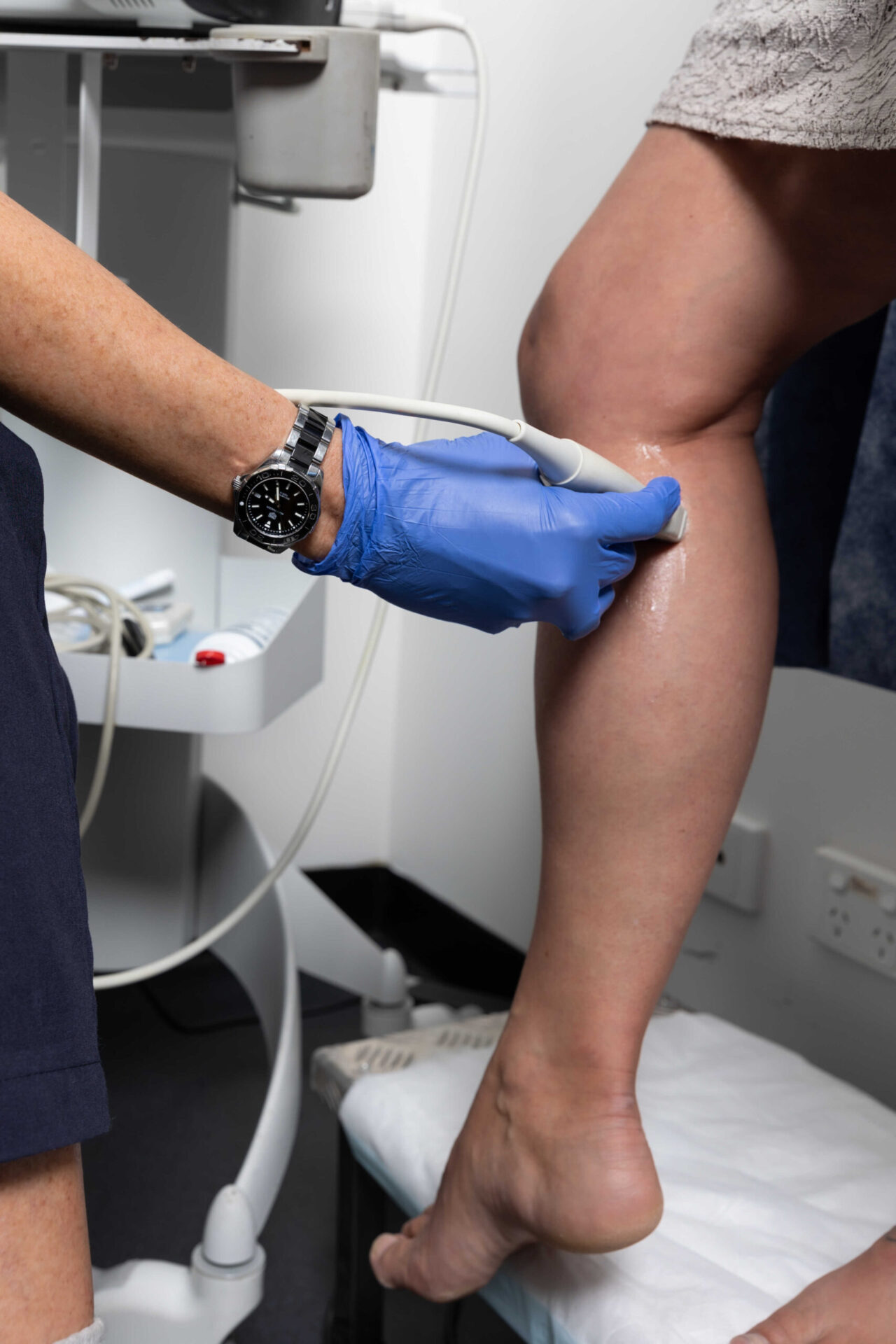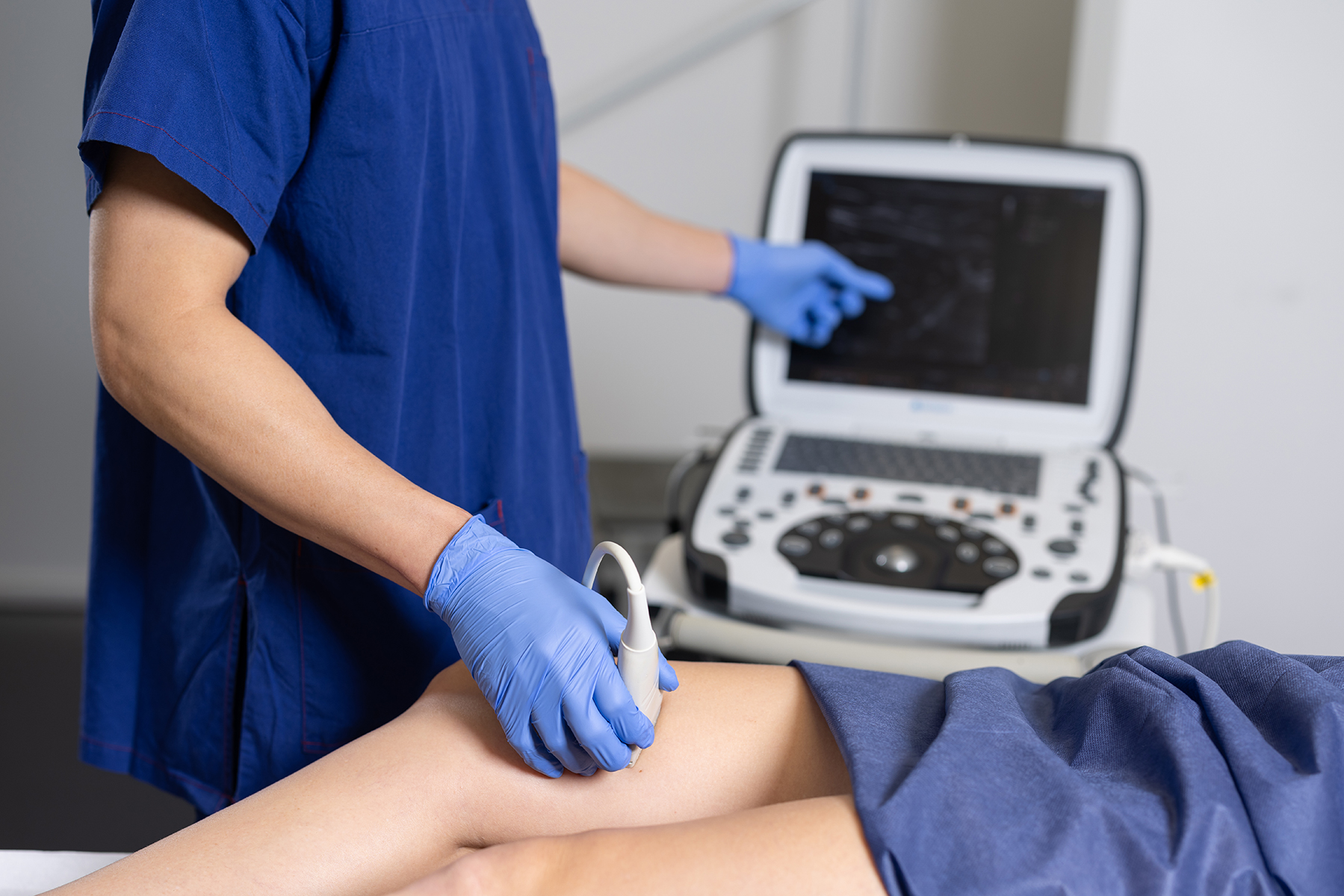
Conservative Management
There are pillars of treatment that patients should consider. These may be a prelude to surgery. However, even if a patient is not considering surgery, it is important to ensure all elements of conservative management are understood and implemented to avoid serious implications of Lipoedema in the long term.
These treatments will be detailed during your initial consultation with Dr Lekich and his team and may include:
- Wearing flat knit compression garments
- Accommodating possible diet and lifestyle adjustments
- Undertaking Manual Lymphatic Drainage (MLD)
Overview
Before proceeding with surgery, our doctors conduct a thorough consultation and uses ultrasound to assess your condition. This ensures a holistic diagnosis, identifying any underlying issues like Lymphoedema, varicose veins, or other causes of leg swelling that could impact your treatment. All relevant health concerns are addressed to ensure the surgery is safe and effective.
It is important to note that treating underlying venous conditions will likely have a significant positive impact before any lipoedema surgery. Our doctors have formal training in Phlebology and are experts in venous conditions as they also operate our sister clinic Vein Doctors Group.
Surgery becomes an option only after these conditions are managed, maximising safety and outcomes. If you and your doctor decide surgery is appropriate, and you’ve followed your Conservative Management Plan for at least six weeks, the team will develop a detailed surgical plan, explaining the procedure, risks, benefits, and alternatives.

Lipoedema Diet
Lipoedema Support Register
Questions to ask your doctor
Surgery Lipoedema
For patients considering a surgical solution, Dr Lekich and his team recommend a protocol that he has adopted in Australia in collaboration with his mentor Dr Heck, who has perfected this surgery in Germany over the last 14 years.
The standard of surgery is minimally invasive, not requiring open surgery.
This Lipoedema-Extraction surgery is a medical treatment for Lipoedema of the legs and arms, aiming to arrest the disease.
The ultimate goals for surgery are:
- Remove the damaging, inflammatory fat to preserve lymphatic health and circulation of the legs.
- Avoid the long-term dependence on compression garments and manual lymphatic drainage, which involves a significant ongoing investment of a patient’s time and money.
- Preserve mobility and reduce degenerative conditions such as arthritis in the hips, knees and ankles.
- Regain freedom from the psychological burden of Lipoedema and reclaim your femininity through the aesthetic improvement that flows from treatment of the medical condition.
Surgery with Renuvion®?
Renuvion offers the latest technology, which when combined with the Water Assisted Lipoedema Extraction, minimises blood loss and promotes more collagen production than the Water Assisted cannulas alone. These combined modalities may further assist to reduce redundant lax skin particularly in the thighs, upper arms and abdomen resulting from the progression of lipoedema and lymphoedema.
Renuvion combines helium plasma with a RF (radiofrequency) energy to provide contraction of the skin in the most direct way under the skin using pinpoint diathermy to the underlying tissue with energy delivered with cannulas not dissimilar in diameter (3mm) and length of the water assisted cannulas to remove lymphoedema and lipoedema tissue. Although skin contraction effect is often visible during the procedure, the maximum benefits are noted at about 9 to 12 months.
This is a minimally invasive solution to improve skin laxity/redundancy and most cost effective when combined at the same time as the lymphoedema and lipoedema surgery, however it should not be compared with the results of dedicated skin lift/skin excision surgeries which may still be required for very progressed lipoedema. There are no guarantees of results, and these will vary from patient to patient.
Our doctors perform Renuvion either in combination during the primary lipoedema and lymphoedema extraction surgery or 9 to 12 months after surgery. If having Renuvion after surgery has been completed, we can also manage any residual lipoedema or venous disease at the same time as targeting disproportionate redundant skin.
Patients must be reviewed by their doctor to discuss risks, side effects and questions, as well as to determine suitability; for example, patients with significant Ehlers Danlos connective tissue disease may have more challenging loose and lax skin in the arms and the thighs, which may reduce the effects however Renuvion has been effective even for marked laxity.
*Any surgical procedure carries risks. Patients should seek a second opinion.
